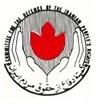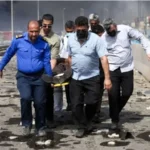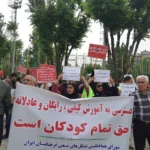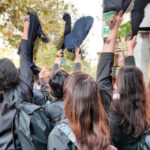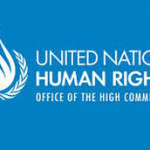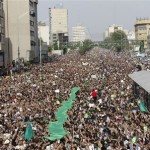
Shiva Ameli-Rad, Leading Advocate for Teachers’ Rights in Iran, speaks About the Teachers’ Movement and the Woman Life Freedom Uprising
One of the most active female advocates for teacher’s rights in Iran, Shiva Ameli-Rad began her activities in 2005 in the Teachers Trade Association (TTA) in Sanandaj, capital of Kurdistan province. Two years later, she founded a TTA branch in Marivan, Kurdistan province. In the 2010’s she was frequently summoned for questioning for her role in organizing nationwide protests by the teachers demanding higher pay and improvement in the education system. In 2018, she and her husband left Iran when the Ministry of Education granted her a five-year unpaid sabbatical. In May 2023, on behalf of the Coordinating Council of the Iranian Teachers Trade Associations, she received a human rights award in South Korea without wearing a hijab. In retaliation, she was fired by the Islamic Republic’s Ministry of Education. Unable to return to Iran without being prosecuted, she now resides in Canada. Her family in Sanandaj has been under pressure from the security agencies ever since.
Since the 2024 academic year began in Iran, the authorities have unleashed a growing wave of persecution against teachers, targeting educators who dare to protest, organize strikes and work stoppages, or demand fundamental rights such as the release of their unjustly imprisoned leaders, trade union rights, the end of educational discrimination, and fair wages.
Educators and teacher union activists in Iran have long been subjected to harassment and sham prosecutions for advocating for their rights. Yet, in the aftermath of the Woman, Life, Freedom uprising that erupted across Iran in September 2022, in which students and teachers were central figures, the Iranian government significantly escalated its crackdown, and as is typical in Iran, minority communities have been singled out for especially harsh treatment.
In the weeks leading up to the new 2024 academic year, the regime’s security forces intensified their harassment of educators and teacher union activists in the Kurdish regions, with at least 14 teachers and activists summoned and interrogated by security forces just in Sanandaj, the capital of Kurdistan province.
Human rights organisations have documented a steady rise in the severity of the persecution against teachers, particularly in smaller towns. In the year following the eruption of the September 2022 protests, at least 28 teachers received judicial convictions, with some facing lengthy prison terms, and at least two of them were ordered to receive 70 lashes.
Following the start of last year’s academic year, dozens of teachers were arrested or summoned for participating in Teacher’s Day protests. Dismissals, psychiatric transfers, and even threats of execution were also used by the state to punish their activism. During this period, at least 97 teachers were arrested, and 20,000 school principals were fired or issued arbitrary suspensions, dismissals, forced retirements, and wage cuts for supporting protests or defying the mandatory hijab law.
Mohammad Habibi, spokesperson for the Teachers Trade Association in Tehran, reports that since the protests, over 320 teachers were dismissed, with thousands more facing disciplinary actions and threats of termination, while approximately 100 union activists were compelled into retirement or suspended, and nearly 20 were terminated.
Islamic Republic authorities have reserved especially harsh treatment for the leaders of Iran’s teachers’ movement. Prominent teachers and advocates who are currently in prison include: Hashem Khastar (Vakilabad Prison, Mashhad); Javad Lal Mohammadi (Vakilabad Prison, Mashhad); Rasoul Badaqi (Evin Prison, Tehran, currently on furlough); Nejat Anvar Hamidi (Sepidar Prison, Ahvaz); Mohammad Ali Zahmatkesh (Shiraz Prison, Shiraz, released in February 2024 to serve in-house arrest with an electronic monitor); Asghar Amirzadegan (Firouzabad Prison, Firouzabad); and Afshin Razmjoui (Shiraz Prison, Shiraz, released in February 2024 to serve in-house arrest with an electronic monitor).
In this interview Shiva Ameli-Rad, a leading advocate for teachers’ rights in Iran To discusses the teachers’ rights movement in Iran, the issues they face, and the increased state persecution they have been subjected to since the Women, Life, Freedom uprising, in September 2022.

Question: Can you describe the challenges faced by the teachers’ movement in Iranian Kurdistan?
Ameli-Rad: Considering that the teachers’ movement in Iran is nationwide and inclusive, and despite all the obstacles that the government has placed in front of union activists and teachers, they have not succeeded in completely suppressing the movement. Specifically, in Kurdish regions in northwest Iran, where since the 1979 revolution, state repression has always been greater than the rest of the country, not only against teachers’ activities but any civil and social activities are quickly framed as political crimes.
Since the early 2000s, when teachers’ unions were revived in the country, the security pressures on activists in Kurdish cities were significantly higher than in other regions, notably for the reason that any demands raised by these organizations soon spread among all sectors of the population nationwide, rather than just being the demands of teachers or workers. The government knows this very well and is trying to suppress these demands with all its means.
The government’s suppression of teachers has two aspects. First, it wants to destroy their spirit, and second, to obstruct the continuation of their movement.
The late 2000s marked the crystallization of the teachers’ movement and union activities in Iran. In those years, many gatherings were held in different cities. However, the teachers’ demands got a significantly greater reception in the Kurdish cities.
For example, in the city of Marivan, if there were, for example, 300 teachers participating in a rally, 200 other people would join them in solidarity, including the families of students. For this reason, Marivan became a center for the teachers’ movement, followed by other Kurdish cities such as Saqqez and Sanandaj in later years.
Protest rallies by teachers continued in the early 2010s, in some cases converging from all over the country in Tehran. In July 2015, we organized a nationwide rally by teachers in Tehran, which was going to be held in front of the Parliament. Tight security measures were put in place in the capital. Two buses full of teachers arrived from Marivan to join the rally but all 200 of them were arrested, along with 100 teachers from other cities.
Question: Can you share your personal experience with government interrogations and how they framed your activities?
Ameli-Rad: When I was being interrogated, I was harassed and threatened, first because I was a woman, and second because of my activities. The interrogators would tell me, ‘You’re not a trade unionist at all. You’re a member of [militant groups] Komalah or Pejak,’ etc. They always tried to link our labour activities to hidden conspiracies, and a large part of the interrogations conducted against me and my colleagues was devoted to extracting anything that could prove a connection with the Komalah Party. They were never prepared to accept that we were engaging in legitimate union activities.
There was so much [societal] acceptance of the teachers’ demands and activities that the government couldn’t believe it. It didn’t want to give legitimacy to the movement.
Question: How did the Woman Life Freedom uprising and the teachers’ movement intersect, particularly in Kurdistan?
Ameli-Rad: There’s an important point about the connection between the teachers’ movement and the Jina movement. [The Women Life Freedom uprising followed the killing in state custody of Mahsa Jina Amini, a 22-year-old Kurdish woman days after her arrest for an allegedly improper hijab.] In May 2022, just a few months before the beginning of the Jina movement, the security forces arrested several trade union activists, including members of the Tehran bus union, as well as two independent activists in Tehran, and accused them of espionage. The security forces also arrested three leaders of the teachers’ movement in Marivan: Soran Lotfi, Sha’ban Mohammadi, and Masoud Nikkhah, which was a big blow to the teachers in the city.
The main reason for these repressive measures went back to early 2022, when there were protest gatherings by teachers every Thursday in front of education departments in Sanandaj and then in Marivan, Saqqez, and some other Kurdish cities. At first, the gatherings included only teachers, but gradually workers joined and then students’ families, and little by little they became widespread. In fact, they were turning into street demonstrations. With the arrest of leading advocates of teachers’ rights, such as Mohammad Habibi, Rasoul Bodaghi, and Jafar Ebrahimi in Tehran, and Soran Lotfi, Sha’ban Mohammadi, and Masoud Nikkhah in Marivan, the government wanted to destroy the roots of the movement.

Shortly after the arrest of these activists, 230 teachers were arrested or summoned in just one month. Some detentions were for just a few hours and some were longer. Of these teachers, 78 were arrested in Saqqez in just one week. It was in these circumstances when a large number of teachers had been sentenced or released on bail, that the Jina movement started.
With the beginning of the Jina movement, we again witnessed that the same teachers who were summoned or facing court sentences, were among the first to welcome calls to join the nationwide protests and go on strike. If you check the various news platforms of the teachers in these past two years, you will see that the proportion of schools that were closed due to teachers going on strikes in Kurdistan was much higher than in other regions of Iran. This was despite the fact that many of these teachers who participated in strikes and refused to teach, were under warrant or had been summoned and interrogated before.
When the government was faced with determined teachers during the protests, it decided to deal with the activists in Sanandaj in a very systematic way. The authorities summoned and interrogated many teachers and put a lot of security pressure on the activists in the city.
About the Teachers Trade Association in Sanandaj, I must say that the activists in this city were under the most intense security and judicial pressure during the past year. The authorities have practically paralyzed the organization. The systematic suppression of union activists was also carried out in other forms in Saqqez.
An important point to note is that the activists were under constant threat of dismissal. We must remember the summoning of these teachers and their interrogations were not simple matters, but actually threats to their careers and lives. Many of the teachers were fired during this time, and many have open judicial cases. In my opinion, the judgments issued against teachers in small cities in Iranian Kurdistan have usually been more severe than those in big cities.
Question: How do civil society organizations, such as the teachers’ union, fit into the larger landscape of civil movements in Iran?
Ameli-Rad: We should always emphasize and pay attention to the importance of civil society organizations in Iran. It should be noted that everything that’s done abroad should strengthen Iran’s civil society. We know that we don’t have any political parties in Iran. All we have is the government, society and civil society organizations. In this power matrix, civil society organizations act like a buffer against the government to defend society. The stronger these civil society organizations are, the less damaging the effects of government actions against society and citizens will be.
In fact, civil society organizations play the role of political parties that have a defense mechanism against power. This means that these organizations, especially the teachers’ organization, which is nationwide, are a layer of defense against the government’s exercise of power. These organizations are much more democratic than political parties because they have an organic and internal relationship with society. In a sense, they have a direct connection with society. They take their dynamism from society and transfer it back to society. A completely two-way relationship. Therefore, these organizations can be a full-fledged mirror of society’s wishes.
In my opinion, the world community and international institutions should try to strengthen the civil society in Iran in every possible way.”
Question: How did your perception of students change during the Woman Life Freedom movement?
Ameli-Rad: Before the Jina movement, my view of students was different and, of course, wrong. I used to criticize them for seeming to be detached from everything. I thought this new generation had nothing to do with the society around them. But after the Jina movement, I realized this view was completely wrong and that students have great potential to protest in order to change the status quo. The students prolonged the Jina movement much more than previous protest movements.
You see, the burning of headscarves and tearing of pictures of government officials started in schools. This continued until the chemical attacks on girls’ schools, which were a kind of [state] revenge for the continued protests by students.
The student protests were a heavy blow to the government, which had its focus on ‘educating’ students from the very beginning of the 1979 revolution. But after four decades of ideological training, the results were completely the opposite. To take revenge, the government launched an assault to poison girl students.
I believe that students can create one of the strongest movements in Iran if they are organized.

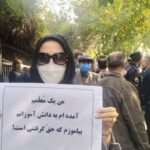
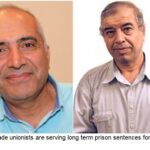
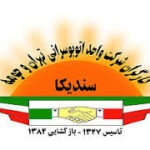


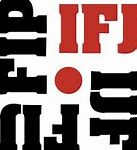



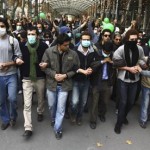
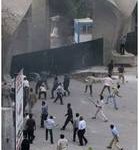
 Posted in
Posted in 